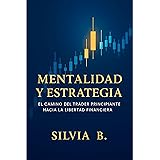Has the recent turbulence in the cryptocurrency market left you questioning the long-term viability of your digital asset investments? As highlighted in the accompanying video, the “WORST CRYPTO CRASH of 2025” has certainly sent ripples, evidenced by significant liquidations and widespread uncertainty. However, a deeper examination of market dynamics, macroeconomic indicators, and institutional movements often reveals a more nuanced picture than what superficial headlines suggest. This analysis delves into the underlying factors influencing today’s cryptocurrency market, assessing whether the current downturn represents a genuine structural breakdown or merely a temporary correction amidst a broader bullish trajectory.
Dissecting Recent Cryptocurrency Market Turmoil
The cryptocurrency market has recently experienced considerable volatility, with a reported $200 million in liquidations occurring within a mere 15-minute window. Such rapid shifts are frequently attributed to a confluence of geopolitical and macroeconomic factors. Specifically, recent tariff proposals on Chinese imports, particularly rare earth exports, have been cited as a primary catalyst for broad market unease. This re-emergence of global trade tensions is understood to have generated significant unpredictability, impacting not only the cryptocurrency sector but also traditional financial markets.
Historically, markets tend to react sensitively to shifts in international trade policy. When major economic powers engage in tariff disputes, supply chains are disrupted, corporate earnings forecasts become uncertain, and investor confidence can wane. Consequently, risk assets, including cryptocurrencies, are often among the first to experience downward pressure. It is important to remember that while the immediate impact of such events can be dramatic, the long-term implications are frequently evaluated through the lens of fundamental market structure and underlying adoption trends.
The Resilient Market Structure Amidst a Crypto Crash
Despite the immediate bearish sentiment fueled by the “WORST CRYPTO CRASH of 2025”, a broader perspective on market structure indicates considerable resilience. Seasoned investors often observe that current market retracements bear striking similarities to previous cycles, where significant dips ultimately preceded substantial rallies. For instance, comparisons can be drawn between today’s price action and historical periods such as the early stages of previous bull runs or moments of significant FUD (Fear, Uncertainty, Doubt) that later proved to be ideal accumulation phases.
Ethereum, for example, has been observed retesting crucial support levels, often referred to as “wedges” in technical analysis. Such retests are typically considered healthy corrections within an overarching uptrend, rather than indicators of a broken market structure. A market that consistently finds support at key technical levels, even after sharp declines, suggests that buying pressure remains substantial and that investor confidence in the underlying assets like Bitcoin and Ethereum persists. Therefore, these moments of retesting are frequently interpreted by many as opportune moments for strategic entry or accumulation, reinforcing a bullish long-term outlook for the cryptocurrency market.
Unpacking Macroeconomic Indicators and Fed Policy
The prevailing macroeconomic environment plays a crucial role in shaping the trajectory of the cryptocurrency market. Recent discussions among officials at the Federal Open Market Committee (FOMC) have indicated a strong likelihood for further easing of monetary policy later this year. It was noted by some officials that current Fed policy might be excessively restrictive, which could impede economic growth. This sentiment aligns with observations that the effects of a potential government shutdown and federal layoffs are beginning to manifest, adding another layer of complexity to the economic outlook.
Historically, periods of restrictive monetary policy, characterized by high interest rates, tend to dampen investor appetite for risk assets. Conversely, when central banks signal or implement rate cuts, liquidity typically increases, and investors often seek higher returns in riskier ventures, including the cryptocurrency market. Furthermore, the anticipation of rate cuts can generate significant positive momentum. Analysis suggests that the Fed could implement rate cuts in the near future, potentially followed by additional cuts in 2026. Such actions are frequently viewed as significant short-term catalysts that could propel the market higher, providing a counter-narrative to concerns about the “WORST CRYPTO CRASH of 2025.”
On-Chain Data and Smart Money Movements
Insights derived from on-chain data offer a unique perspective into the true sentiment and activity within the Bitcoin and broader cryptocurrency market, often contrasting with short-term price fluctuations. While it is true that some early adopters, often referred to as “OG Satoshi era wallets,” have been observed divesting significant amounts of Bitcoin, this selling pressure has been largely absorbed by the market. This absorption is notable, as it indicates robust demand from other segments of investors.
A fascinating trend observed in the data is the behavior of “smart money,” which is strategically accumulating digital assets without exhibiting FOMO (Fear Of Missing Out). These sophisticated investors are identified as meticulously “picking their spots,” acquiring assets during low points and employing a dollar-cost averaging strategy. This approach, characterized by consistent investments over time regardless of price fluctuations, minimizes risk and capitalizes on market volatility. The prevalence of such strategic accumulation suggests that underlying confidence in assets like Bitcoin, Ethereum, and Solana remains strong, reinforcing the notion that the market structure is fundamentally sound despite any recent dips.
The Tides of Institutional Adoption and Bitcoin’s Future
The ongoing integration of digital assets into traditional finance represents a monumental shift that fundamentally alters the investment landscape. Concrete evidence of this trend includes Morgan Stanley’s decision to remove restrictions on Bitcoin and crypto investments for all its clients. This action by a major global financial services firm signals a significant opening of the floodgates, indicating growing institutional acceptance and demand for digital assets.
Additionally, BNY Mellon, another banking giant, has been actively pursuing tokenized deposits and blockchain-based payment solutions. These initiatives are not merely about acquiring cryptocurrency; they involve leveraging blockchain technology to enhance existing financial infrastructure. The onboarding of crypto rails by traditional banking institutions is monumental, not only for Bitcoin but arguably even more so for platforms like Ethereum and Solana, which provide the technological backbone for many of these innovations. These developments suggest a future where digital assets are deeply embedded within the global financial system, fostering a strong foundation for continued growth and mitigating the impact of any localized “crypto crash.”
Regulatory Progress and Future Catalysts for Digital Assets
The path to regulatory clarity in the cryptocurrency sector is steadily progressing, a development anticipated to be a significant catalyst for future growth. Brian Armstrong, CEO of Coinbase, has expressed considerable optimism regarding the Market Structure Clarity Act. This proposed legislation is designed to establish clear regulatory guidelines for non-stablecoin crypto assets, such as Bitcoin and Ethereum, resolving long-standing ambiguities that have historically been exploited by regulatory bodies. The bipartisan support this bill has received in the House, and its ongoing debate in the Senate, indicates strong momentum toward its enactment.
The establishment of clear rules is expected to reduce regulatory uncertainty, encourage greater institutional participation, and foster innovation within the digital asset space. While challenges remain, such as lobbying efforts by traditional banks to influence certain aspects of the legislation, the prevailing sentiment among senators suggests a commitment to moving this critical framework forward. These legislative advancements, combined with anticipated Fed rate cuts and other short-term catalysts, are projected to provide substantial tailwinds for the cryptocurrency market heading into Q4 and the subsequent year, offering a positive outlook beyond the initial shock of a “WORST CRYPTO CRASH of 2025” narrative.
Bitcoin as a Beacon of Freedom and Resistance
Beyond its investment potential, Bitcoin has garnered increasing recognition as a vital tool for financial freedom and resistance against authoritarian regimes. As powerfully articulated by Nobel Peace Prize winner Maria Corina Machado, Bitcoin offers a critical lifeline in regions where government-imposed exchange rates and economic controls stifle individual liberty. In contexts such as Venezuela, Bitcoin has evolved from a humanitarian tool to a fundamental means of resistance, enabling citizens to bypass oppressive financial systems and preserve their wealth.
This humanitarian dimension of Bitcoin is further underscored by data indicating that a significant portion of the global population lives under autocratic regimes or in economies plagued by collapsing fiat currencies. For instance, reports suggest that approximately 87% of individuals globally reside in areas experiencing either economic instability or authoritarian rule. Moreover, around 72% of the world’s population is subject to some form of autocratic governance. In these environments, where bank accounts can be frozen and financial censorship is a stark reality, Bitcoin provides an uncensorable, permissionless alternative. It empowers individuals to secure funds, make payments, and engage in commerce without reliance on centralized intermediaries, truly serving as money that dictators cannot stop. This profound societal utility reinforces Bitcoin’s intrinsic value, extending far beyond mere speculative investment.
Emerging Opportunities in Web3 and Passive Income
The broader Web3 ecosystem continues to evolve, presenting novel opportunities for individuals to reclaim ownership and generate passive income from their digital data. While the Web3 niche is still in its nascent stages, the underlying philosophy revolves around decentralization and user empowerment. Innovations in this space aim to address the current model where large tech platforms monetize user data without direct compensation to the individual.
One compelling concept being explored involves platforms where users can earn passive income anytime their personal data is accessed by data consumers. Though initial earnings might appear modest (e.g., less than $10 for some users), the foundational shift it represents is substantial. It is believed that as the Web3 ecosystem expands and adapts, the potential for individuals to derive meaningful income from their data will grow significantly. This paradigm shift, where individuals retain control and receive compensation for their digital footprint, represents a future where the value generated by personal information is returned to its rightful owners, offering a compelling argument for engagement beyond the traditional cryptocurrency market.







